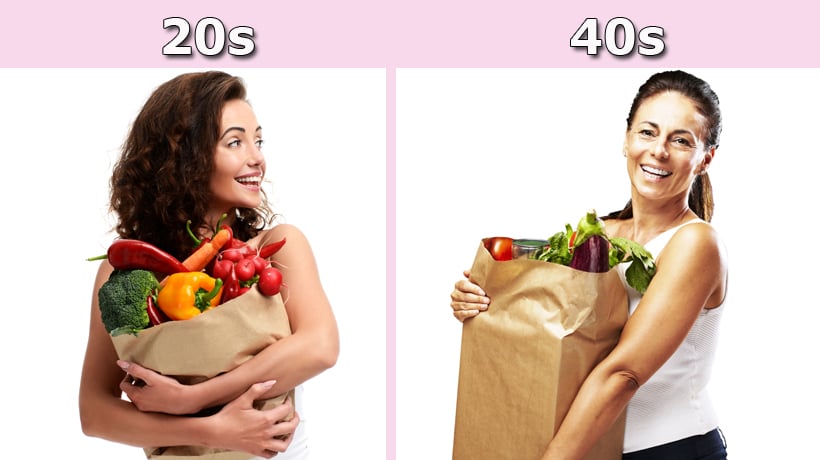There are some healthy habits that never go out of style. Health experts recommend habits like getting plenty of sleep, exercising regularly, and maintaining a healthy weight at every stage of our lives.
Yet women may have different health needs depending on how old they are. The Office on Women’s Health from the U.S. Department of Health & Human Services has created a checklist specific to each stage of a woman’s life. Based on that, here are the health habits that surprised us the most for each group of women.
Women in their 20s
For women who would like to become pregnant, the Centers for Disease Control and Prevention (CDC) recommends they take 400 to 800 micrograms of folic acid every day in addition to incorporating folate into their diet. Folic acid is a B vitamin that our bodies use to make new cells, which benefit the skin, hair, and nails. During early development, folic acid helps form the neural tube, which can help prevent some major birth defects of the baby’s brain and spine.
The CDC says all women of reproductive age should have folic acid every day because major birth defects of the baby’s brain or spine occur only three to four weeks after conception, before most women know they’re pregnant. If you don’t take a folic acid supplement, you can find it in broccoli, citrus fruits, avocado, and fortified foods like breakfast cereals.
Women in their 30s
The American Academy of Orthopaedic Surgeons says most people reach peak bone mass between 25 and 30 years old. After that, bone resorption slowly begins to exceed new bone formation. This leads to bone loss.
This decade of a woman’s life is especially crucial to prevent and slow bone loss. Choosing weight-bearing exercises that resist gravity can help. If you’re healthy enough to handle these higher-impact exercises before significant bone loss happens, try hiking, running, and dancing. Exercises that are easy on the joints, like swimming or cycling, don’t challenge bone health. Talk to your doctor before beginning a new exercise program. Women can also improve their bone health by having a diet high in calcium and vitamin D.
Women in their 40s
The National Institute of Diabetes and Digestive Health says type 2 diabetes is most likely to develop when a woman is in her mid-40s. Physical inactivity health problems related to that, such as high blood pressure, increase the chances of developing type 2 diabetes. Women are also more likely to develop type 2 diabetes if you have prediabetes or had gestational diabetes when they were pregnant.
If you suspect you may have diabetes or prediabetes, your doctor can develop a specific treatment plan that’s appropriate for you. In general, cutting back on refined carbs, sweets, and saturated fats can help, as well as incorporated more fruits, vegetables, and fiber.
Women in their 50s
Some people think they’ve had all the vaccines they need when they’re kids, but the CDC recommends several vaccines specifically for women ages 50 and older. The CDC suggests all healthy adults 50 and older get two doses of the shingles vaccine two to six months apart.
Besides shingles, health experts recommend another dose of vaccines that you may have had already. WebMD says adults should get the flu shot and the vaccine for pneumonia and meningitis because they are more susceptible to infection. Finally, WebMD recommends getting the Tdap booster shot (tetanus, diphtheria, and pertussis) every 10 years.
Sources:
https://www.womenshealth.gov/healthy-living-age
https://www.cdc.gov/ncbddd/folicacid/about.html
https://orthoinfo.aaos.org/en/staying-healthy/healthy-bones-at-every-age/
https://www.emedicinehealth.com/what_is_bone_loss/article_em.htm#is_it_possible_to_prevent_bone_loss
https://www.niddk.nih.gov/health-information/diabetes/overview/what-is-diabetes/type-2-diabetes
https://www.webmd.com/healthy-aging/stay-active-18/screenings-vaccines-needed



